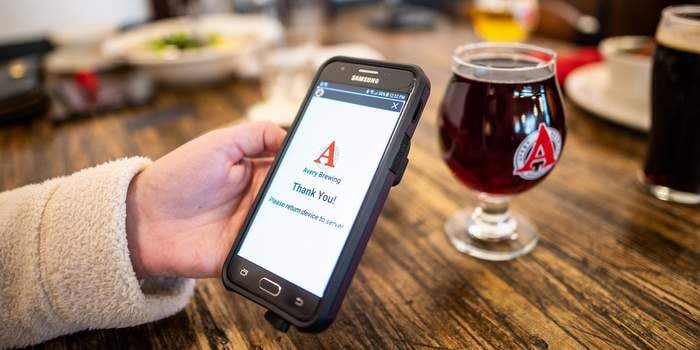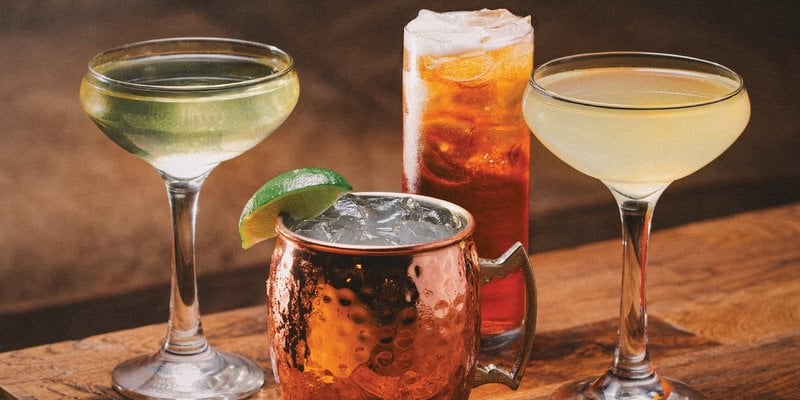
Financial services company Hilco Global issued a timely report on the present state of the craft beer industry, the outlook for existing brewers emerging from the current crisis, and how these dynamics may create certain opportunities for new entrants to the market.
Indicators Suggest Modest Growth for Craft Brewers That Evolve, Connect and Prepare Now for Post-Pandemic Re-Start, authored by Adam Stump, Managing Director at Hilco Valuation Services, is a solid recap of the year thus far (versus the expectations coming into the year), and what it all might mean going forward. That forward-looking portion is what really grabbed our attention.
Read the whole thing for yourself here, but here are some of the key ideas. Thanks to Hilco for sharing with us.
If there is a big wave of closures, but overall craft beer market share returns to normal, that’s an opportunity for someone
Notwithstanding the shorter-term impacts of COVID-19, over the next 5 years, Hilco expects to see a more mature pace of growth where openings and closings become more balanced and stabilized, leading to modest growth overall in craft beer.
For those brewers who are able to weather the storm from a cash flow perspective and readily adapt, there are likely to be new opportunities for greater share of the market and expanded revenue channels.
A reset of product offerings
Millennials, who comprise a sizable portion of the craft consuming public, will be in their 30s and 40s a decade from now, and as part of an overall U.S. population are likely to drive increased preference for premium beer between now and then. While some may choose to trade down during the early period following COVID-19, we believe premiumization will remain the driver of growth in craft beer. And the health-centric focus of many consumers in this and other age ranges is making its way into craft beer as well based on data from the Brewers Association, which demonstrates a noteworthy and growing interest in the sourcing and type of ingredients in the beer they consume.
…
Regardless of the products they choose to produce and offer, Hilco expects that craft brewers that do emerge from this crisis will be highly focused on operational aspects of their business like never before. There will be a delicate balance needed between ensuring that tight controls are placed on where and how money is spent as compared with previous cash flow practices, while at the same time remaining nimble and figuring out where to invest in order to attract patrons back to brewpubs and deliver product configurations that make the most sense in the new world order.
A reset in sales channels
Given that a significant number of bars and restaurants nationwide will likely either never reopen or survive only briefly after they do, we also expect to see a notable decline in craft draft sales and a possible, associated uptick in sales on the package side. Insights into consumer preferences for retail-style pack configurations gained by brewers throughout curbside pickups and deliveries conducted during the lockdown may prove valuable toward building this type of added resilience into their post-pandemic business models.
Watch for buyouts and strategic partnerships
We also see the likelihood of more buyouts and strategic partnerships evolving from the crisis; some by necessity just to stay afloat and others by choice as a strategic move to drive growth. This may mean even fewer brewery brands overall in the coming years. Whether this will help to stabilize and motivate a resulting base of more successful brewery operators or simply diminish innovation and variety across the category remains to be seen.
Innovation will always be super important
Those who utilized stalled capacity as an opportunity to generate some replacement revenue while helping their communities during the crisis, may find ways to build upon those endeavors; just as those who beefed-up their branded merchandise efforts may find that channel can bring an added layer of revenue moving forward as well.
On-premise will rise again, but how is an open question
The pre-COVID momentum of unique on-premise experiences built first and foremost around socially engaging activities, such as ax throwing and ping pong, may also be critical in building and sustaining long-term on-premise traffic. In the short term, however, businesses that have invested in these types of facilities may pay an expensive price. Balancing the cost of labor needed to deliver these on-premise experiences with diminished guest levels, and under the limitations of whatever social-distancing guidelines remain in place, may prove to be a slippery slope for operators.
Contract brewing and acquisitions over expansions
For those in need of additional production, we expect to see fewer assuming the inherent risk of building out the associated infrastructure in favor of establishing partnerships to leverage others’ underutilized facilities and engaging with contract brewers, who may benefit greatly in the near term from the fallout of this crisis. That said, based on the likelihood of a significant increase in closures across the craft beer industry, we also expect 2020 to be an active year for acquisition of equipment left behind by those who have been forced to shutter their operations. New breweries already in planning prior to COVID-19 are likely buyers for these used Brew Houses, Fermenters, and related components. We anticipate some will step in to assume existing leases and acquire equipment in place as a means of jumpstarting their operations.
Six keys to succeeding, post-pandemic
Hilco believes the brewers that will emerge in the best position to succeed moving forward are those who are spending significant time and resources today planning for the next step by actively:
1) working through scenarios of how to adapt to operating at 50% or less of normal capacity and how their staffing needs and operating requirements will be impacted;
2) looking at how to modify previous purchasing levels and renegotiate contracts accordingly;
3) talking to distributors and customers about retrieving draft kegs that were in place before the shutdown and refilling/returning them before re-openings occur to ensure they maintain control of as many tap handles as possible and capture vacant ones that may come up as competitors fail;
4) exploring avenues for carrying their fledgling pandemic period take-out/curbside business forward and;
6) working with outside consultants and vendors to build on initial stop-gap ecommerce and merchandise programs they put in place during the crisis.





Leave a Reply
You must be logged in to post a comment.